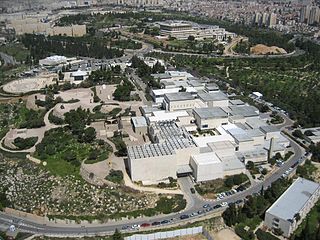
The Israel Museum is an art and archaeological museum in Jerusalem. It was established in 1965 as Israel's largest and foremost cultural institution, and one of the world’s leading encyclopaedic museums. It is situated on a hill in the Givat Ram neighborhood of Jerusalem, adjacent to the Bible Lands Museum, the Knesset, the Israeli Supreme Court, and the Hebrew University of Jerusalem.

Anna Ticho was an Israeli artist who became famous for her drawings of the Jerusalem hills. The house in Jerusalem that she shared with her husband is now a branch of the Israel Museum and a café.
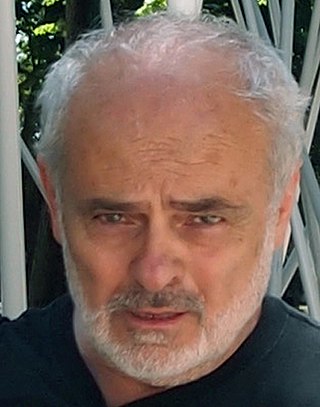
Joshua Neustein is a contemporary visual artist who lives and works in New York City. He is known for his Conceptual Art, environmental installations, Land Art, Postminimalist torn paper works, epistemic abstraction, deconstructed canvas works, and large-scale map paintings.
Nachume Miller (1949–1998) was an Israeli artist who immigrated to New York City in 1973, where he made a name for himself in the American Modern Art scene. Miller's parents were both Holocaust survivors. His father was a captain in the front lines of the Russian Army during World War II and his mother was a Lithuanian who had once been held captive in a concentration camp. Both escaped the Nazis, re-united and fled to Israel. Nachume was born during their voyage, in Frankfurt, Germany, on January 28, 1949. He grew up in the town of Holon, Israel, where he was inspired by his father who spent most of his post-war days carving elaborate wood sculptures of Cubist human forms. Nachume, on the contrary, excelled in painting.
Judith Margolis is an Israel-based American artist working visually in paintings, drawings, artist's books and multi-media collages. In her art and writing she "explores tensions between consciousness, feminism, and religious ritual tradition".
Ahuva Sherman is an Israeli artist who works in oil, pastel, and wall tapestries.
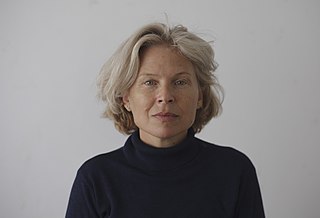
Sigalit Ethel Landau is an Israeli sculptor, video and installation artist.
Marilyn Kirsch is an American artist, known for abstract and non-objective paintings often described as Lyrical Abstraction.
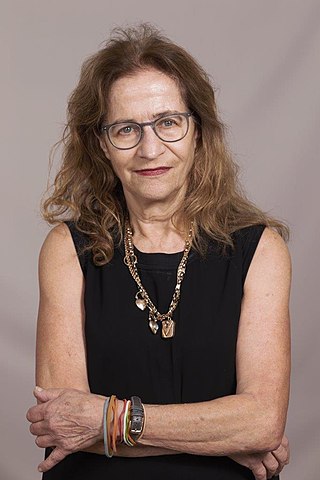
Michal Na'aman, is an Israeli painter. From the point of view of values, her work is characterized as conceptual art and deals with such subjects as the limitations of language and sight, the possibilities for expression, and gender issues. Using the techniques of collage, Na'aman has created works that examine the visual way of thinking as opposed to the verbal way of thinking. In 2014 she was awarded the Israel Prize for Plastic Arts for her work.
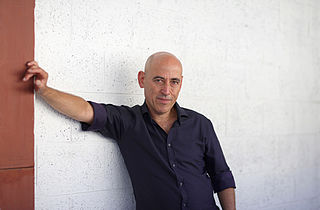
Nahum Tevet is one of the leading Israeli artists whose work was among the earliest to respond to the minimalist canon by introducing into his installations everyday domestic objects, metaphors and images like in: Corner (1973-4) and Arrangements of Six Units.

Arie Aroch was an Israeli painter and diplomat born in Kharkiv, which was part of the Russian Empire. Aroch's work was a mixture of Pop Art and abstract art, along with elements from his biography. In addition, many scholars of the history of Israeli art have pointed out Aroch's pioneering use of Jewish themes in his works. His painting style included unstructured scribbling and drawing, and it influenced a broad range of artists, including Raffi Lavie, Aviva Uri, etc. Sarah Breitberg Semel, in her article, Agrippa versus Nimrod (1988), suggested Aroch as a model for the new Israeli concept of design in art, and suggested his painting, Agrippas Street was the representative of Jewish identity. In 1971, Aroch was awarded the Israel Prize in Painting for his work.
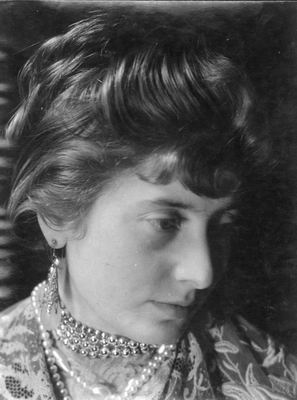
Liselotte Grschebina was an Israeli photographer.
Mirit Cohen was a Russian-born Israeli sculptor and painter. Cohen resided in New York City from 1975. In 1990, she committed suicide.
Mindy Weisel is an American abstract visual artist and author.

Angelika Sher is a Lithuanian-born Israeli photographer.
Tal Shochat is an Israeli photographer.
Jill Sebastian is an American educational innovator, integrated public artist and multi-media artist.

Ruth Schloss was an Israeli painter and illustrator. Major themes in her work were Arabs, transition camps, children and women at eye-level. She expressed an egalitarian, socialist view via realism in her painting and drawing.
Orna Ben-Ami, is an Israeli sculptor and former journalist.

Israeli printmaking refers to printmaking by Jewish artists in the Land of Israel and the State of Israel beginning in the second half of the 19th century. The genre includes a variety of techniques, including woodcutting, etching and lithography.











